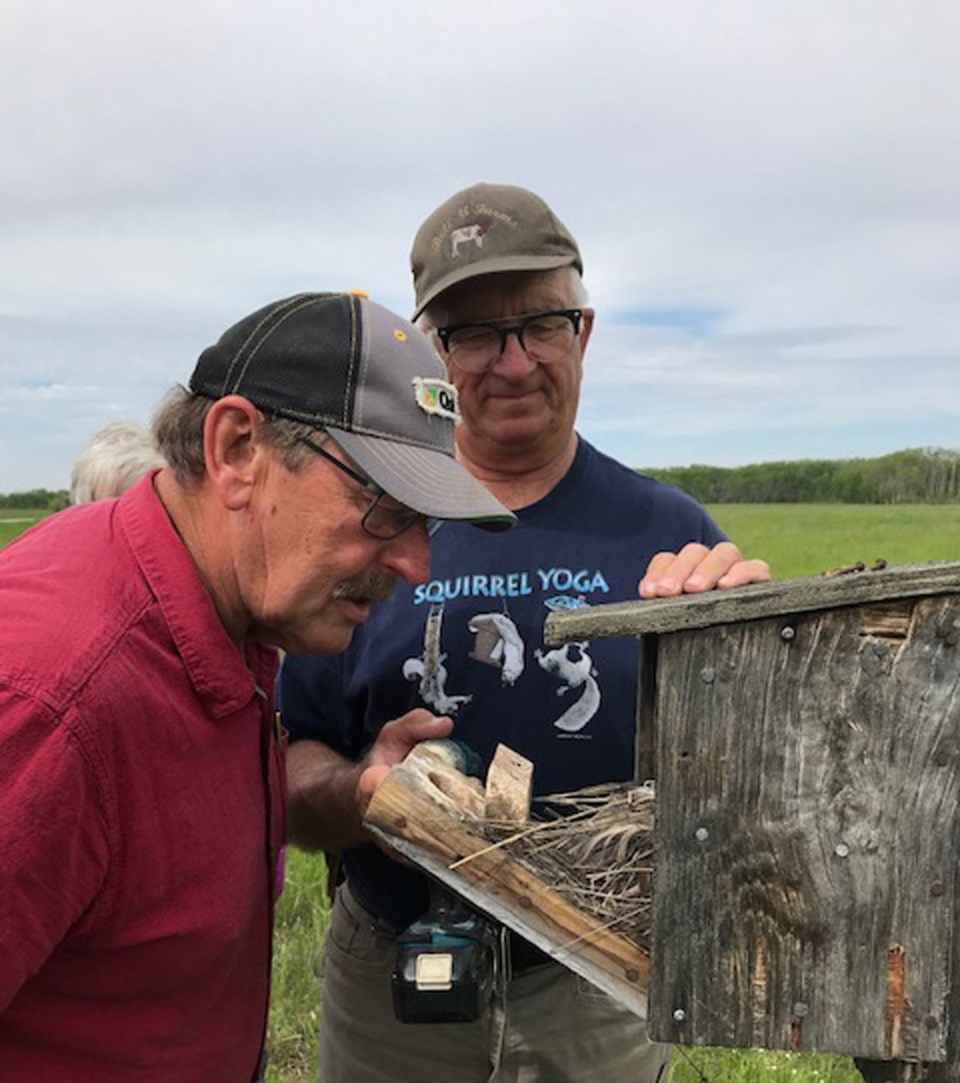YORKTON - Road allowances can be an important habitat for wildlife.
To promote preserving the habitat, and to invite people to use and enjoy the public land the Yellowhead Flyway Birding Trail Association (YFBTA) is launching a Road Allowance Project (AKA "Skip the Ditches).
The official launch of the project takes place Wednesday, May 17, at the Morley Maier farm south of Yorkton on Highway 9 South starting at 10 a.m..They will tour the roads – they have a trailer with seats -- place three signs and then meet back at the farm for lunch.
The idea for the project emerged out of the 2022 YFBTA Annual General Meeting when “a committee was struck to look into what could be done to bring the public’s attention to the importance of preserving and having access to road allowance habitat within rural municipalities,” detailed the February issue of the organization’s newsletter.
People should also recognize that the recent ‘Trespass to Property Legislation’ does not include road allowances.
The importance of road allowances has been noted by others too.
“Every scrap of public land is precious in a province that has privatized 85 per cent of its prairie ecozone (and is working hard to sell off the rest). One type of public land that gets little attention is the undeveloped road allowance, a strip of natural landscape that is supposed to run along the edge of many sections of farmland in Saskatchewan,” wrote Trevor Herriot in his online blog.
“Our road allowances—surrounding all land south of the forest in a grid every mile east and west and every two miles north and south—are often used to provide and maintain transportation and utility access through the landscape, serving the public interest. They form a network of commons upon the land that connects us to services and to one another. But road allowances that are not used for roads and other infrastructure have also historically provided refuge and connectivity for nature in agricultural landscapes—supporting the commons of healthy, diverse ecosystems we depend upon for our own health and well being,” continued Herriot who is a prairie naturalist from Regina who writes books, essays, and radio documentaries about the intersection of culture and nature on the northern Great Plains.
“All told, these strips of public land only a generation ago protected hundreds of thousands of acres of habitat in this province. At sixty-six feet wide, each mile of undeveloped road allowance provides eight acres of habitat for an array of plants and animals. When they are left alone, they support a mix of native and introduced grasses and forbs, shrubs and trees in moister areas, and small wetlands. Here and there, scraps of native prairie will persist if no one has put them to the plow.
“Historically, road allowances formed ribbons of nature around cultivated land, a wild kingdom belonging to no man where anyone was free to hunt, walk, camp, pick berries; where badgers, meadowlarks, and burrowing owls thrived, and where the lady slipper and the monarch butterfly took refuge.”
The YFBTA committee met and after discussion it was decided to install a sign at each end of a designated road allowance promoting the value of road allowance habitat and inviting ‘All to Enjoy’.
The sign is installed on road allowances with the permission of the rural municipality in order to bring attention to the valuable habitat that lies within the road allowance boundary.
The committee decided that R.M. councils be approached to ask permission to install the signs within their jurisdictions.
The Rural Municipality of Saltcoats was the first to give permission for the installation of signs within their jurisdiction. In the fall (2022) signs were installed on the corners of eight separate road allowances in the R.M. of Saltcoats.
Nancy Bird, acting on behalf of YFBTA, met with and received approval from the R.M. of Orkney for installation of signs on road allowances.
Martin Phillips met with the R.M. of Wallace, and approval has been granted for signs.
The RM of Cana has also approved signage.
“Rural Saskatchewan is changing. Land prices are high and going higher. Land speculators and farm corporations are buying land, clearing the land of bush, clearing old farmsteads and draining sloughs and potholes to enhance the value of the land. Road allowances have not escaped the bulldozers and the trac-hoes. In some cases road allowances have lost much of the habitat within their boundaries,” detailed the YFBTA newsletter.
“Road allowances are not owned by corporations or land speculators. They are controlled by the Rural Municipality and thus all ratepayers within the municipality. They provide access to all when passable. They provide valuable native habitat for many diverse plants and animals.
“Road allowances are important. Signs are installed as a reminder that road allowances should be preserved for ‘All to Enjoy’.”
YFBTA received a number of donations to defray expenditures. Additional donations are invited and may be directed to Monique Smith Secretary-Treasurer YFBTA, Box 252 Saltcoats, Saskatchewan S0A 3R0






